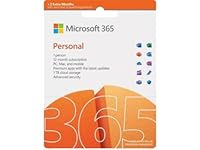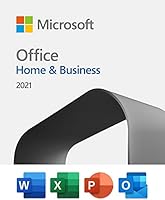
Exploring Microsoft Windows Server 2025 Standard Edition 64-Bit Features and Benefits
Introduction to Windows Server 2025 Standard Edition 64-Bit
Microsoft Windows Server 2025 Standard Edition 64-Bit represents a significant advancement in server technology, designed to meet the evolving demands of modern computing environments. Historically, Windows Server has undergone several transformations since its inception, with each edition building upon the capabilities of the previous versions. The journey from the initial releases to the 2025 edition reflects a commitment to enhancing user experience while integrating cutting-edge technology and features that cater to organizational needs.
The shift to 64-bit architecture is particularly notable, as it allows for enhanced performance and increased memory utilization, which is essential for resource-intensive applications and services. This improvement in architecture has enabled businesses to support larger workloads, provide better application responsiveness, and optimize data handling processes. With 64-bit support, organizations can now leverage more than 4 GB of RAM, an essential feature for those operating in data-driven environments.
This version of Windows Server is primarily targeted at small to medium-sized businesses seeking reliable, scalable, and efficient server solutions. These organizations often require robust infrastructure for file storage, application hosting, and network management, all while maintaining cost-effectiveness. Industries such as healthcare, finance, and retail stand to benefit greatly from Windows Server 2025, as it offers tools and frameworks to streamline operations and enhance security protocols.
As businesses continue to expand and adapt to the digital age, the need for powerful server systems has never been greater. Windows Server 2025 Standard Edition 64-Bit not only symbolizes a leap in technological advancements but also showcases Microsoft's dedication to equipping organizations with the necessary tools to thrive in an increasingly competitive landscape.
Key Features of Windows Server 2025 Standard Edition 64-Bit
Windows Server 2025 Standard Edition 64-Bit introduces a variety of key features that significantly distinguish it from its predecessors, ensuring enhanced performance, improved security, and streamlined management capabilities. One of the standout enhancements is the optimization of system performance. This version leverages advanced kernel improvements and resource management techniques that allow for more efficient use of hardware resources, ultimately improving application performance and response times for users across various workloads.
Security has been a paramount concern in recent years, and Windows Server 2025 addresses this with robust security improvements. The introduction of advanced threat protection features, such as enhanced encryption protocols and multi-factor authentication, ensures that sensitive data is well-protected against unauthorized access. Moreover, improved vulnerability management tools help system administrators proactively identify and remediate potential security risks, fostering a more secure operating environment for businesses.
Another critical aspect of Windows Server 2025 is its enhanced virtualization capabilities. The updated Hyper-V functionality allows for the better management of virtual machines, including seamless resource allocation, simplified scaling options, and enhanced failover clustering. These advancements enable organizations to create flexible and resilient IT infrastructures that can adapt to changing business needs and workloads, ultimately driving efficiency and cost-effectiveness. Furthermore, the integration of container technology facilitates the deployment of lightweight applications, promoting greater agility in development and production environments.
Lastly, the management tools have seen substantial updates. The new Windows Admin Center interface provides a more intuitive and user-friendly experience for IT professionals, allowing for streamlined management of both local and cloud resources. Along with these enhancements, Microsoft has revised its licensing model, making it more accessible and flexible for businesses of all sizes. Overall, Windows Server 2025 Standard Edition 64-Bit stands as a testament to Microsoft's commitment to continuous improvement, delivering features that cater to a modern digital workplace.
Installation and Configuration Process
Installing and configuring Microsoft Windows Server 2025 Standard Edition 64-Bit is a structured process that requires careful planning. First, ensure that your hardware meets the supported specifications. The minimum requirements typically include a 64-bit processor, at least 4 GB of RAM, and 32 GB of available storage space. However, for enhanced performance, especially in enterprise environments, a dual-core processor, 8 GB of RAM, and a solid-state drive (SSD) are recommended.
Before initiating the installation, backup any existing data and prepare installation media, which can be either a DVD or a USB drive with the Windows Server image. Once your hardware and installation media are ready, the next step is to boot from the installation media. Follow the on-screen prompts and select the appropriate options, including language preferences and edition selection. It is essential to choose the Standard Edition to benefit from features tailored for small to medium-sized businesses.
During the installation process, users will be prompted to select a destination drive. It is advisable to use the entire disk for installation unless you are setting up a dual-boot configuration with another operating system. After completing the setup, Windows will automatically restart and finalize the installation. Once the system is up and running, you can begin the configuration process.
Post-installation, several critical configurations will enhance system functionality. Begin with Active Directory setup to manage users and resources more efficiently. Next, focus on network configurations to ensure reliable connectivity and assign static IP addresses where necessary. Lastly, initial security settings, such as firewall configurations and user permissions, should be addressed to safeguard the server. Following these best practices will create a robust server environment, suitable for both novice and advanced users.
Use Cases and Applications of Windows Server 2025 Standard Edition 64-Bit
Microsoft Windows Server 2025 Standard Edition 64-Bit is designed to meet the diverse needs of various organizations, providing robust infrastructure that supports multiple real-world applications. One prominent use case is its deployment in file and print services. Organizations can streamline their data management and printing operations, enabling users to efficiently share documents and resources across networks while maintaining security and access control. This is particularly beneficial for businesses that handle sizeable documentation or require centralized printing solutions.
Another significant application of Windows Server 2025 Standard Edition is in the realm of application hosting. Organizations can utilize this server to host critical business applications, ensuring high availability and performance for users. This capability is essential for businesses in sectors such as finance, healthcare, or education, where application reliability and accessibility directly impact operations and customer satisfaction.
Moreover, Windows Server 2025 seamlessly integrates with cloud services, enhancing its utility for modern organizations. For example, businesses can combine on-premises solutions with cloud resources to create hybrid environments, optimizing both operational flexibility and cost-effectiveness. This approach allows organizations to leverage scalable cloud computing while maintaining control over sensitive data and applications.
Case studies from various sectors highlight the versatility of Windows Server 2025 Standard Edition. In the manufacturing industry, companies have reported improved production efficiency by managing their enterprise resource planning (ERP) systems effectively on this server. Similarly, educational institutions have found success in utilizing the server to host learning management systems (LMS), facilitating remote learning and resource sharing among students and educators.
By leveraging the capabilities of Windows Server 2025 Standard Edition, businesses can enhance their operational efficiencies and drive innovation, adapting to ever-changing digital landscapes. This server edition not only supports essential business functions but also positions organizations for future growth.
- Offers quick and easy installation on PC
- Enjoy all the features of this software by purchasing it with OEM pricing
- The software is licensed for 16 Core
$999.99 Prime







